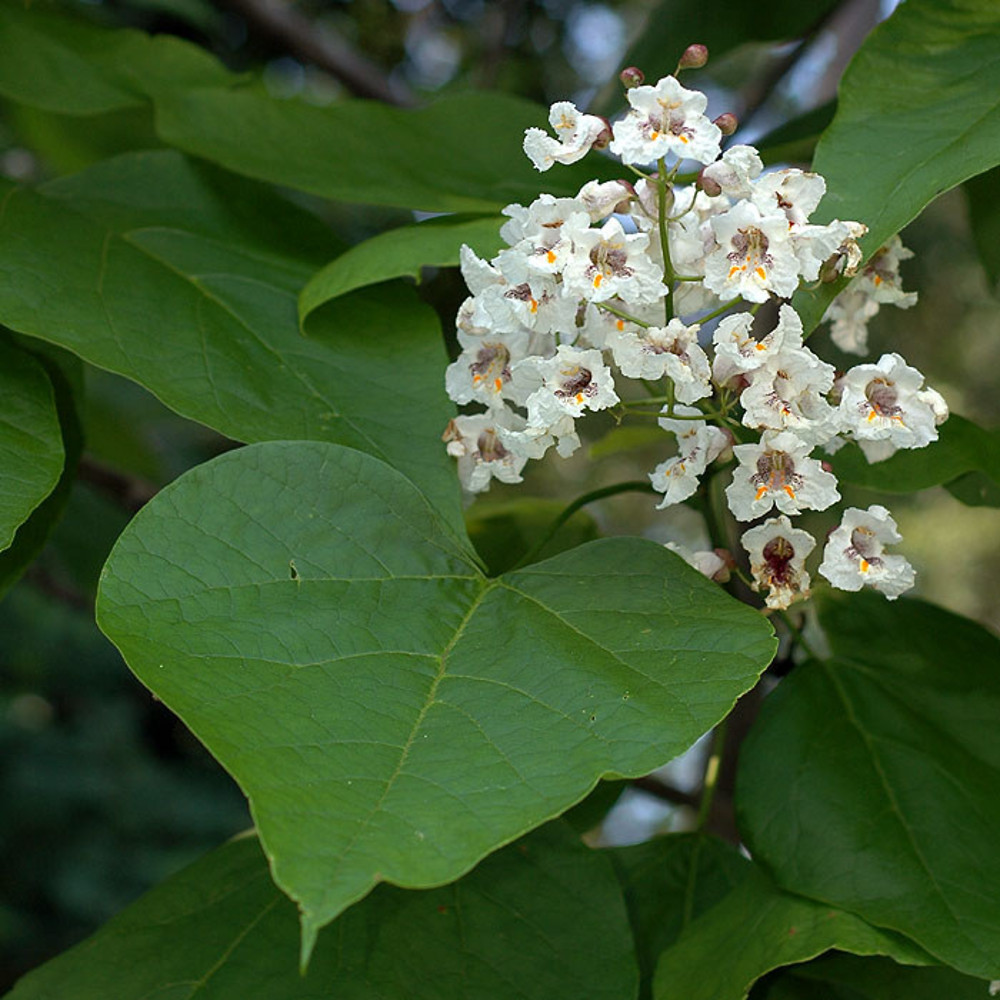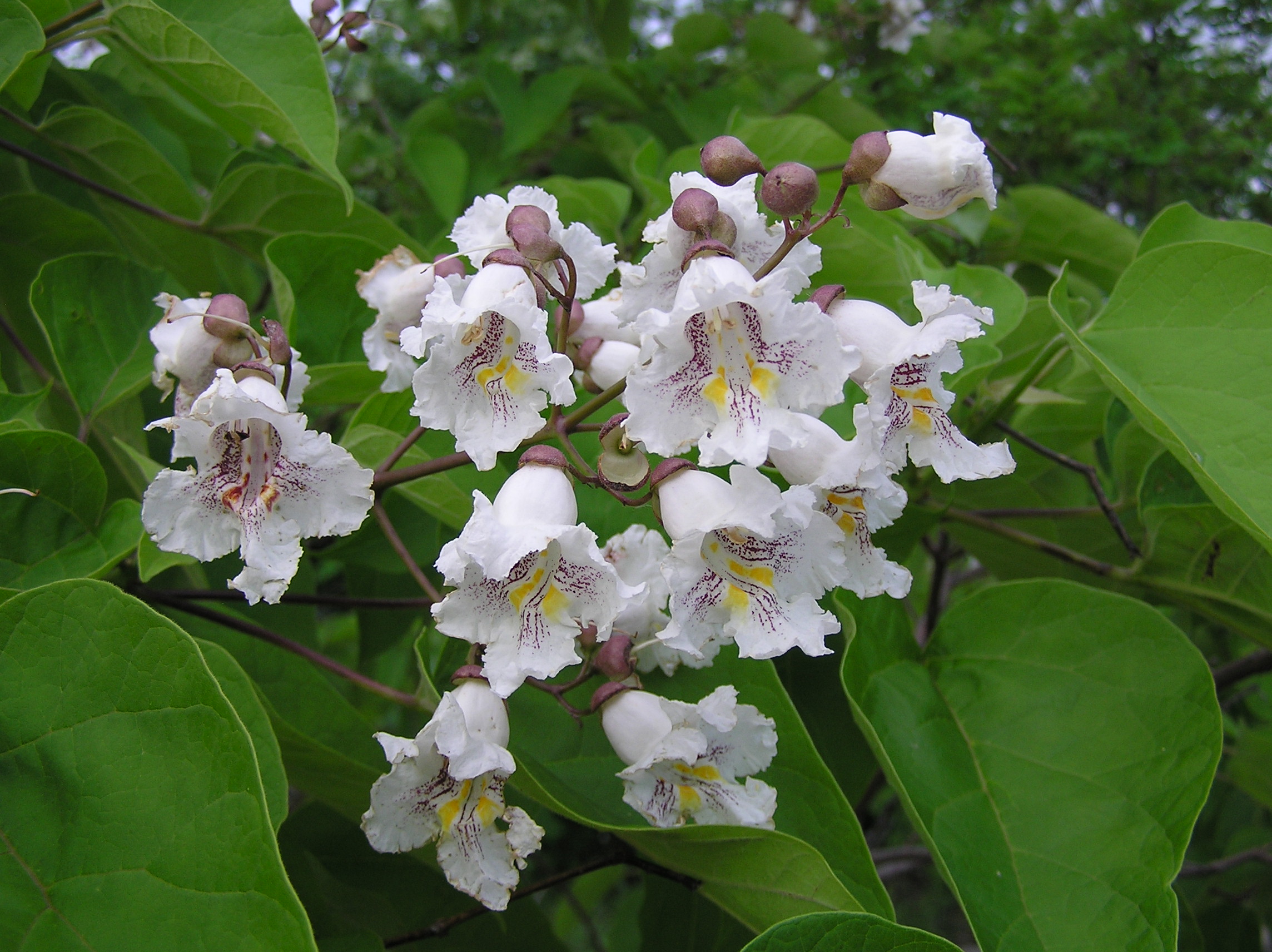Catalpa bignonioides
Common catalpa (Catalpa bignonioides )
The Common catalpa (Catalpa bignonioides ) is a deciduous tree of the family Bignoniaceae ( Bignoniaceae ). Its natural habitat is in the United States, but he was naturalized as an ornamental tree in Europe. One often finds him as a street and park tree. All parts are mildly toxic.
Description
The Ordinary trumpet tree reaches a height of 15 to 18 meters. It forms a thick, mostly short trunk and a wide sweeping, irregular crown. The bark is light brown and thin.
The leaves are ovate, 10 to 20 inches long, short acuminate and entire. The base is trimmed or slightly cordate, rarely lobed something. The upper leaf surface is dark green, the underside hairy light green and more or less densely short and soft. The leaves are dropped without autumn. They smell unpleasant, when rubbed, what kind of other representatives of the trumpet trees differs.
The flowers are pure white and show in the throat purple spots and two yellow stripes. They are available in 10 to 15 centimeters long, many-flowered panicles and bloom from June to July. As fruits of numerous thin-walled capsules are formed, which are up to 40 centimeters long and 5-7 mm wide. They remain on the tree over the winter and only open in the spring. The seeds are flattened and frayed fibrous on both ends.
Very old trumpet trees sometimes develop drag -like Absenkeräste that even take root and form new strains.
Distribution and habitat requirements
The natural range extends across the southeastern United States to Florida.
The Ordinary trumpet tree grows in floodplains and along river banks and prefers a moderately dry and very nutrient -rich, sandy to gravelly, neutral to alkaline soil. It is found in sunny locations, it is heat resistant but not very frost hardy.
System
We distinguish several cultivars, including
- 'Aurea ' with golden yellow bud and later viridans leaves.
- 'Nana' with much smaller leaves and a densely branched crown that flattens with age. The cultivar is usually highly refined stocky and is used as a container and street tree.
Botanical history
The ordinary trumpet tree was brought by the English naturalist Mark Catesby in 1726 to Europe.
Toxicity
The whole plant is slightly toxic, the main active ingredient is Catalpin, which is found in all parts except the seeds. In the leaves there is still about 1.5 % of p- coumaric acid, ursolic acid and caffeic acid. The wood contains quinoid compounds, which can result in skin contact with an allergic reaction.
Use
The Common catalpa is used both as a crop and because of the decorative flowers and fruit of remarkable jewelry as ornamental tree. The flowers are often served by bees; the tree is considered as bee pasture.










